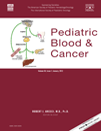Th1/Th2 Cytokine profiles in G+/G− bacteremia in pediatric hematology/oncology patients†
Conflict of interest: Nothing to declare.
Abstract
Background
Early diagnosis of infection and appropriate choice of antibiotics are essential not only to improve the prognosis of the patients but also to prevent from the abuse of the antibiotics in hematology/oncology children at the time of neutropenia after intensive chemotherapy.
Procedure
We evaluated the quantification of Th1/Th2 cytokines with flow cytometry bead assay (CBA) in 145 hospitalized febrile hematology/oncology children with positive blood culture to seek for a rapid diagnostic method to determine the type of infection.
Results
IL-4, IL-6, IL-10, TNF-α, and IFN-γ levels from both G− and G+ bacteremia groups were significantly higher than those of controls (P < 0.001). The median levels of IL-6, IL-10, TNF-α of Group G− were 525.4, 96.0, and 6.9 pg/ml, respectively, significantly higher than those of Group G+ (150.0, 22.6, and 4.5 pg/ml, respectively, P < 0.001). According to the different degrees of increased IL-6 and IL-10 levels, we named the G− bacterial infection related cytokine profile G− BIRCP and the G+ BIRCP. The specificity and sensitivity of BIRCP prediction for G− and G+ bacteria cultures were 60.2% and 75.4%, 66.8% and 70.1%, respectively. Similar therapeutic efficacy was achieved between BIRCP-based and broad-spectrum antibiotics groups (86.1% vs. 89.3%, P > 0.05), which was significantly increased as compared with that (65.5%, P < 0.05) of empirical group.
Conclusions
These results showed the promising use of the IL-6/IL-10/TNF-α determination with CBA technology for the early and rapid diagnosis, evaluation of G+/G− bacteremia in pediatric hematology/oncology patients. Pediatr Blood Cancer 2012; 58: 50–54. © 2011 Wiley Periodicals, Inc.




